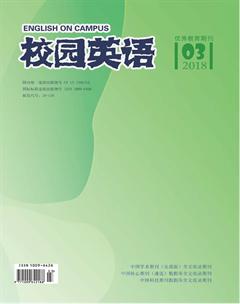Methods of Image Translation of Tang Poetry
1. Add Necessary Information
The translator can adopt some supplementary methods such as annotation or adding some necessary information to make the associative meaning more explicit. The following two versions are the translations of Bai Juyis famous lines “汉皇重色思倾国, 御宇多年求不得”:
Version 1:The beauty-loving monarch longed year after year
To find a beautiful lady without a peer.
Version 2:Appreciating feminine charms,
The Han emperor sought a great beauty.
Throughout his empire he searched
For many years without success.
From the integrality aspect, the second version is better because Xu Yuanchongs translation loses to convey the meaning of the second line “御宇多年求不得”. But if we make a meticulous analysis, we will find that “汉皇” in this poem does not refer to the emperor in Han Dynasty, but refers to the Tang Emperor Xuanzong (唐玄宗). Xuanzong is infatuated with beauty, which is one of the characters of him and is also the associative meaning of “漢皇”. Both of the two versions have added necessary information to explain this cultural-loaded image, but the Yangs translation misunderstand its referential meaning.
2. Annotation
When some images with special local or historic connotations are difficult for the target language readers to appreciated, but it is so long to give necessary information in the poem, the method of preserving the original image and adding annotations after the poem as footnotes to explain their connotations can be particularly suitable, which can faithfully preserve the source cultural flavor, and at the same time reduce the degree of misunderstanding. Lets see an example from Liu Yuxis (刘禹锡) Memories at Jinling (《金陵怀古》):
后庭花一曲, 幽怨不堪听。
O hear the captive rulers song!
How can you bear his grief for long?
The Chinese phrase “后庭花” has a special historical meaning, which is from a song created by the Emperor Chen Shubao (陈叔宝) in Nan Dynasty. Descendants usually use this phrase to symbolize Chens extravagance and dissipation which led to the downfall on Nan Dynasty. Professor Xu in his work translates it as “the captive rulers song”, which evades the image but expresses its connotation directly. This may causes a puzzle for readers who dont know this story. If we just translate it as phonetic letters “hou tinghua”, and annotation to explain the cultural background, readers must be much clearer about the poets meaning, and at the same time, it keeps the original image.
3. Replacement
The language in the translated version should be natural, fluent, idiomatic and intelligible for the target readers so as to avoid misunderstanding caused by the linguistic obstacles that impede it. Concrete methods like omission, deleting the original image but keeping the connotation and replacing image with a ready target language image are often used in target-culture-oriented translation.
When referential meaning of some hackneyed images do not exist in the target language culture, it is impossible to mention their associative meanings. In this case, translators can change the expression to achieve the semantic equivalence. Take Chinese image “娥眉” (emei, eyebrow)as an example. “娥眉” in Chinese used to depict the classical Chinese beautys slender eyebrows, which are just like the antennae of silkworm moth. So, in Chinese readers mind, “娥眉” represents the image of beauty. However, how should it be translated since there is no such metaphor in English? Lets see three versions about Li Bais Waiting in Vain (《怨情》):
美人卷珠簾, 深坐蹙蛾眉。
Version 1:With eyebrows knit she waits in vain. (Translated by Xu Yuanchong)
Version 2:And sadly sits with drooping head;
In the first version, Professor Xu uses “eyebrows” instead of “eyebrows like the antennae of the silkworm moth”, which can be called partial omission. Through this way, the translator expresses the connotation of this image correctly but not exactly. In the second version, the translator completely omits to mention “娥眉”, but directly describes the ladys desolation, which can be called whole omission.
The above methods are the methods which are usually used in translation, while the translator should adopt flexible methods according to different situations. Thus translators take an important role in the translation of Tang poetry. In order to get the beauty of the original poetry, any methods are acceptable. In fact, it calls for further study in the future.
参考文献:
[1]Waley,Arthur,Chinese Poems,London:George Allen and Unwin Ltd,1946.
【作者简介】李志芬(1990.11.15- ),女,河北沧州青县人,辽宁大学,专业:英语笔译。

